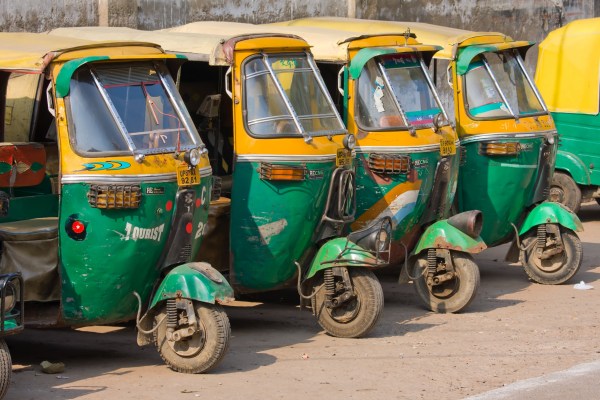Uber may be in the midst of a major PR crisis in the U.S., but it continues to ramp up its efforts in India — its second largest market — where it launched a low-cost service aimed at beating the country’s icon auto rickshaws.
The company said Uber Go, its new service that includes small vehicles like the Tata Indica Vista (image below) and Maruti Suzuki Swift, is now available in all ten cities that it services in the country. The company believes it is now in a position to challenge India’s near ubiquitous fleets of auto rickshaws for cheap travel.

Uber is in a constant state of price reductions and offers across its markets in Asia as it aims to accelerate mainstream adoption of taxi booking services across the region. It’s no surprise, then, that it is giving all Uber Go passengers an immediate and ongoing 35 percent discount on their rides.
An Uber Go journey has a $0.65 base rate, with a minimum fare of around $1.20 — the service is priced at $0.17 per kilometer or less than $0.02 per minute. Auto rickshaws aren’t universally priced, of course, but Uber claims it can beat them for many urban journeys.
Uber is usually limited to people who own a credit card, which accounts for a small minority in India, but now it has a new wallet-based payment system — introduced in response to regulation — it has the reach to open up for cheaper rides.
“There hasn’t been a smarter, cheaper and safer way to get around your city,” Uber claimed in a blog post. The company added:
Uber Go signifies a speedy, utilitarian and simple solution to get around quickly; without the need to have second thoughts about choosing it! It’s perfect for absolutely any kind of ride, especially the short hauls – think quick bank runs, short trips between meetings, jaunts to the mall and the movies; with Uber Go even the mundane daily commute to work can now be stress-free and relaxing. All this for a price lower than an auto-rickshaw.
This is seriously aggressive pricing, which once again raises the question of just how much money Uber is hemorrhaging in markets like India, where demand for its services is still nascent. It is clearly slashing prices to help drum up awareness of its service, not to mention undercut the competition, and is almost certainly far from break-even in these markets.
When we asked the company when the pricedrop will end and Uber Go costs will increase, a spokesperson dodged a direct response with the following statement:
Uber’s technology makes for a very efficient marketplace. One where we bring down average ETAs and enable drivers to do more trips per hour they spend on the platform; this increased efficiency means drivers, make more money and allows us to provide cheaper prices to riders. More riders continue to use Uber, the longer we can sustain lower prices.
Well, that clears that up then, or not.
Beyond the dubious price drop, rolling out to ten cities in one go is also a large-scale operation that is doubtless resource-intensive and no easy feat to organize. But Uber is very much focused on taking upping the ante in India, where the anticipated growth in smartphone adoption is tipped to ignite demand for e-commerce and other mobile-centric services.
Uber’s main rivals in India include Meru Networks and Ola. The latter is available in 19 cities in the country, and just scored $210 million in funding — led by SoftBank — to expand. That money is all the more important because, as news like today shows, Uber is relying on its vast piles of investor money to cut its prices to levels that may be unsustainable for less-minted competitors.
India is, nonetheless, becoming a major focus for the U.S. company, which covers more than 100 cities worldwide. In addition to its wallet payment solution, it also rolled out a financing program to help drivers buy their vehicles outright.
Many, including this writer, are asking major questions about the ethics and morality of Uber right now, but it is clear that the company’s global focus is to “Uber On” as usual.
